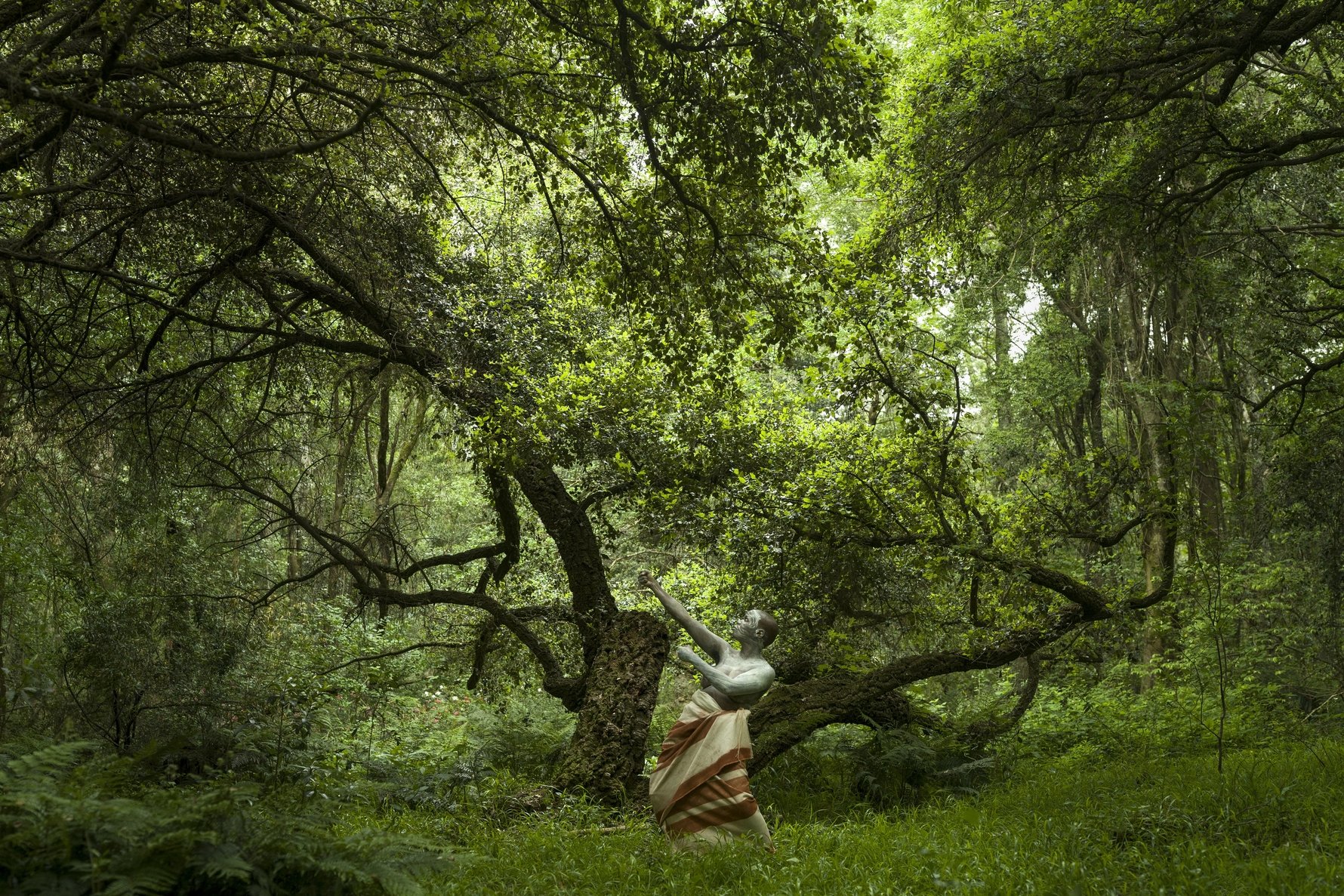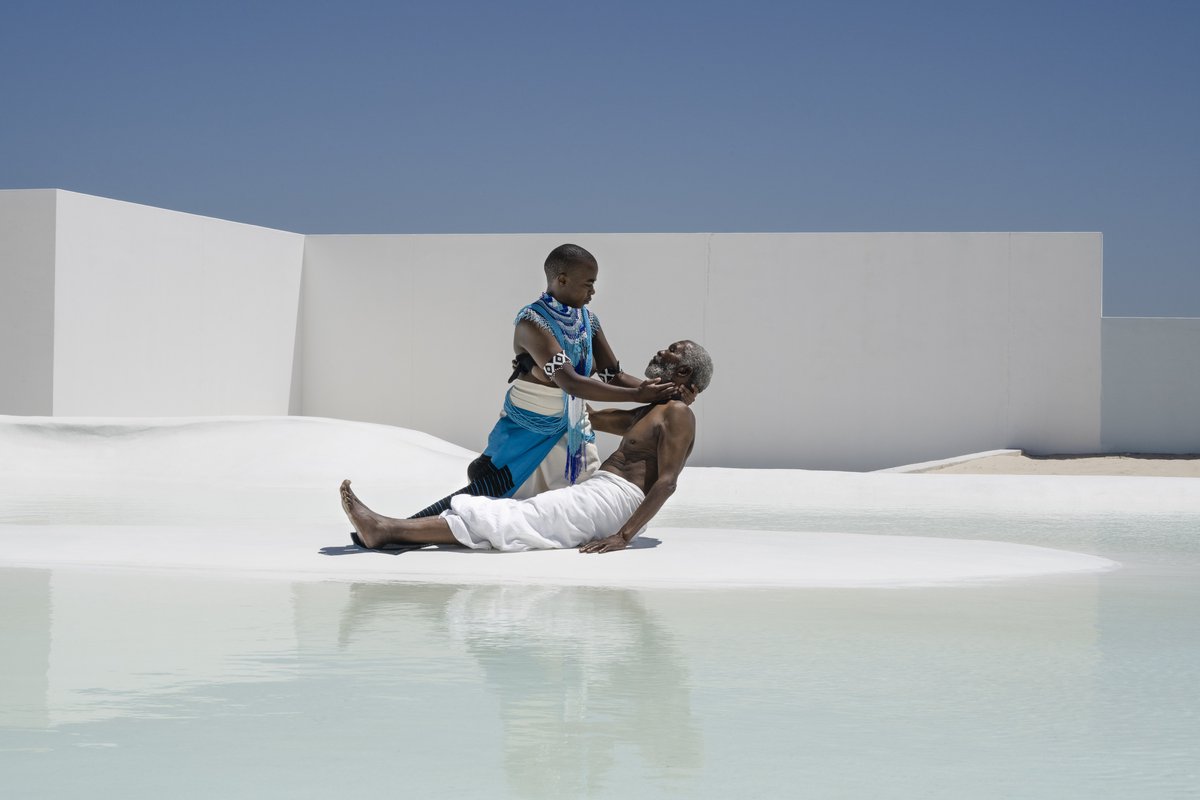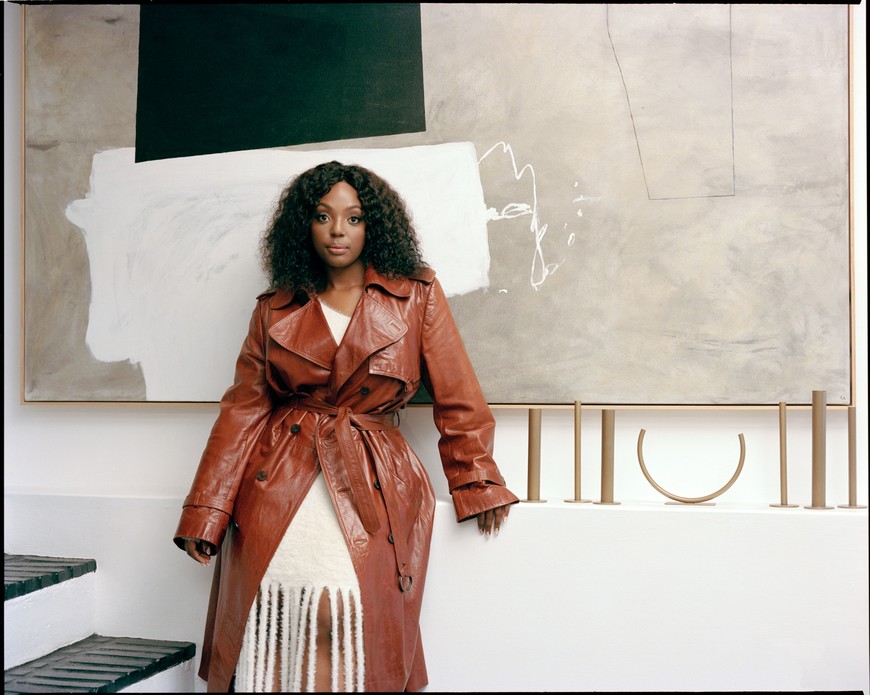Following the Joburg launch of the exhibition, curator Anelisa Mangcu talks to us about the inspiration behind this exhibition and how the works evolved during the Bodyland residency and mentorship.
How did you first become involved as a curator of the Bodyland project?
We founded Victory of the Word NPC in April 2020, at the beginning stages of the global lockdown. The NPC was founded to firstly keep the doors of the Lovedale Press open, but also to sustain the lives of the Lovedale Press custodians. Lovedale Press was a catalyst for the Black intelligentsia, and our aim was to draw attention to Southern-African languages in spoken and written form, particularly the Xhosa language through bringing visibility to the books dating back as far as 1823, when Lovedale was first formed by the Scottish missionaries in collaboration with the Xhosa nation.
The Bodyland Incubator Residency was founded by artist, visionary, and my dear friend Athi-Patra Ruga. The residency is one of the many ways our NPC, when formed, planned to create ecosystems to bring attention to the importance of Lovedale Press and its historical mark in our country.
How does this project align with your own curatorial interests?
My curatorial interest is in the exploration of intersectional African identity, challenging established paradigms and drawing connections between the historical and the contemporary. The requirement for the residency was to conceptually link one’s current art-making process, establishing its historical and traditional roots and making connections with the contemporary while holding space for ideas. That is very much aligned with my curatorial interests, so it was easy for me to do what I do as a curator and bring their ideas to life, with the support of my co-founder Athi-Patra Ruga.

Tyhume Valley was chosen specifically as the site for Bodyland – what is it about the area’s history and landscape that made it stand out?
The Tyhume Valley is the site where the first Xhosa word and first Xhosa Christian hymn was written. It is 30kms away from the home of Lovedale Press in Alice (eDikeni) in the Eastern Cape, so it felt fitting to occupy this section of the Eastern Cape as a site for inspiration, creativity, and contemplation. Athi-Patra Ruga also has a studio and residence in Hogsback which overlooks the valley where Lovedale Press happened in many forms. His leadership was incredible to witness, as it is not often that emerging artists receive hands-on guidance from an established international artist. Especially one that speaks the same language (artistically and culturally) and has a deep understanding of the politics of the land and how those who feel connected to it engage with it.
'I don’t believe I can really speak for any of the artists, but from what I do know, all eight occupants and the five artists who were able to exhibit left the residency feeling inspiration from the land of the Eastern Cape. All became far more confident to present in their first language being isiXhosa, and all felt a sense of pride in the artist and people they were becoming.'
How were the artists selected to join the Bodyland incubator residency?
The Open Call for applications resulted in 64 artists applying for the eight available spots. The applications were of a very high standard. The adjudication criteria included age, residents or diaspora of the Eastern Cape, proficiency in English and Xhosa and being a socially engaged artist/individual. A very important part of the assessment was their presentation, it had to be compelling and creative in whatever medium they chose to work. The requirement was to take their practice to a new level while engaging with the history, natural resources, and body/land politics of the Tyhume Valley.

How did this residency influence the work of the artists included in the exhibition?
[In] The time from when the residency began and ended (24th October – 7th November 2020) to when we first exhibited (in Cape Town from 3rd February – 3rd March 2022) a lot of changes within the group had happened. Some had their first solo shows, others had attended other residencies, others changed mediums and others were unable to show for various reasons. I don’t believe I can really speak for any of the artists, but from what I do know, all eight occupants and the five artists who were able to exhibit left the residency feeling inspiration from the land of the Eastern Cape. All became far more confident to present in their first language being isiXhosa, and all felt a sense of pride in the artist and people they were becoming. I have seen chosen mediums change or expand into something greater. Change is good, experimenting is encouraged but the passion and intention remains the same.
'We all want to belong and one of the many ways we belong is in connection with land or a site.'
The artists mentored during the residency are described as “occupants”. What is meant by this?
Artist-in-residency programs give an artist the opportunity to live and work outside of their usual environments, providing them time to reflect, research and produce work for a short period of time. In this residency, the artists were expected to immerse themselves fully in the land, its politics and to occupy space, hence being referred to as ‘occupants’.
Land, its ownership and relationship to one’s identity, is a constant motif and preoccupation in South Africa. Can you share your thoughts on this?
We all want to belong and one of the many ways we belong is in connection with land or a site. This is a global desire. We all believe we owe allegiance either to the place we were born in, or where we lived in our formative years, or even where those we love the most reside. We almost always want to protect and honour that space in our actions, in the work that we do and how to move in the world. It only makes sense that it would also be the driving motif or force in one’s creative expression
What experience do you hope visitors to the Bodyland exhibition will come away with?
My belief is that every visitor will leave the exhibition inspired and with a better understanding of the artists as individuals, despite it being a group show.
VISIT THE EXHIBITION
Bodyland – A Site for Contemplation is on show at UJ Art Gallery until June 3. The gallery is located on the University of Johannesburg Kingsway Campus, Auckland Park (entrance on Empire Road), open 09:00-15:00 (closed Sat, Sun).





Comments